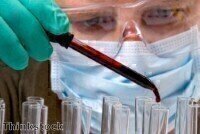Electrophoretic separations
An Introduction to Chromatography in Biotechnology
Jun 27 2014
Chromatography is the scientific process of separating out, identifying and quantifying the various compositional elements which make up a substance. This is achieved by converting the substance from a stationary liquid or solid phase to a mobile gas phase, and measuring its reaction.
The practice of chromatography has become increasingly important in the field of biotechnology due to its ability to detect the presence of such molecular matter as nucleic acids, vitamins, fats, carbohydrates and protein. The latter in particular has become very significant in the field of biopharmaceuticals, as protein is often a desired component of many medicines and supplements.
Producing Biopharmaceuticals Rich in Protein
In order to achieve a commercially viable product which is rich in protein, chromatography is often used to detect and quantify its presence. This is done in a step-by-step process, as below:
1. Identify the protein which is desirable in the drug, supplement or medication.
2. Find the gene which encodes the aforementioned protein.
3. Trap this gene.
4. Insert this gene into the host cell, which will foster the gene and produce the protein satisfactorily.
5. Differentiate and separate the implanted protein from those already present in the host cell.
6. Reproduce the protein.
7. Extensively vet the protein to determine its viability as an effective, safe and commercially viable product.
8. Lastly, market and sell the product.
Of course, not all of these roles are undertaken via chromatography, though the technique does play a significant and irreplaceable part in the process. The most commonly used chromatography technique to achieve this identification and separation of the targeted protein is reversed phase chromatography (RPC).
However, this technique is most effective when dealing with lighter protein molecules. To deal with heavier ones, a more sophisticated approach is required. Some of the most practiced alternatives involve combining RPC with other forms of chromatography, including ion-exchange chromatography (IEC), hydrophobic interaction chromatography (HIC) and gel-filtration chromatography (GFC). By adding in multiple separation techniques which analyse differing dimensions of the sample, researchers are able to increase accuracy in protein separations and build more
detailed predictions. To meet the growing need for more sophisticated predictions, there has arisen a need for new software which can match the biotechnology. The article Adaption of Retention Models to Allow Optimisation of Peptide and Protein Separations deals specifically with this growing need, and of the possible solutions which can satisfy it.
Events
Jan 20 2025 Amsterdam, Netherlands
Feb 03 2025 Dubai, UAE
Feb 05 2025 Guangzhou, China
Mar 01 2025 Boston, MA, USA
Mar 04 2025 Berlin, Germany














